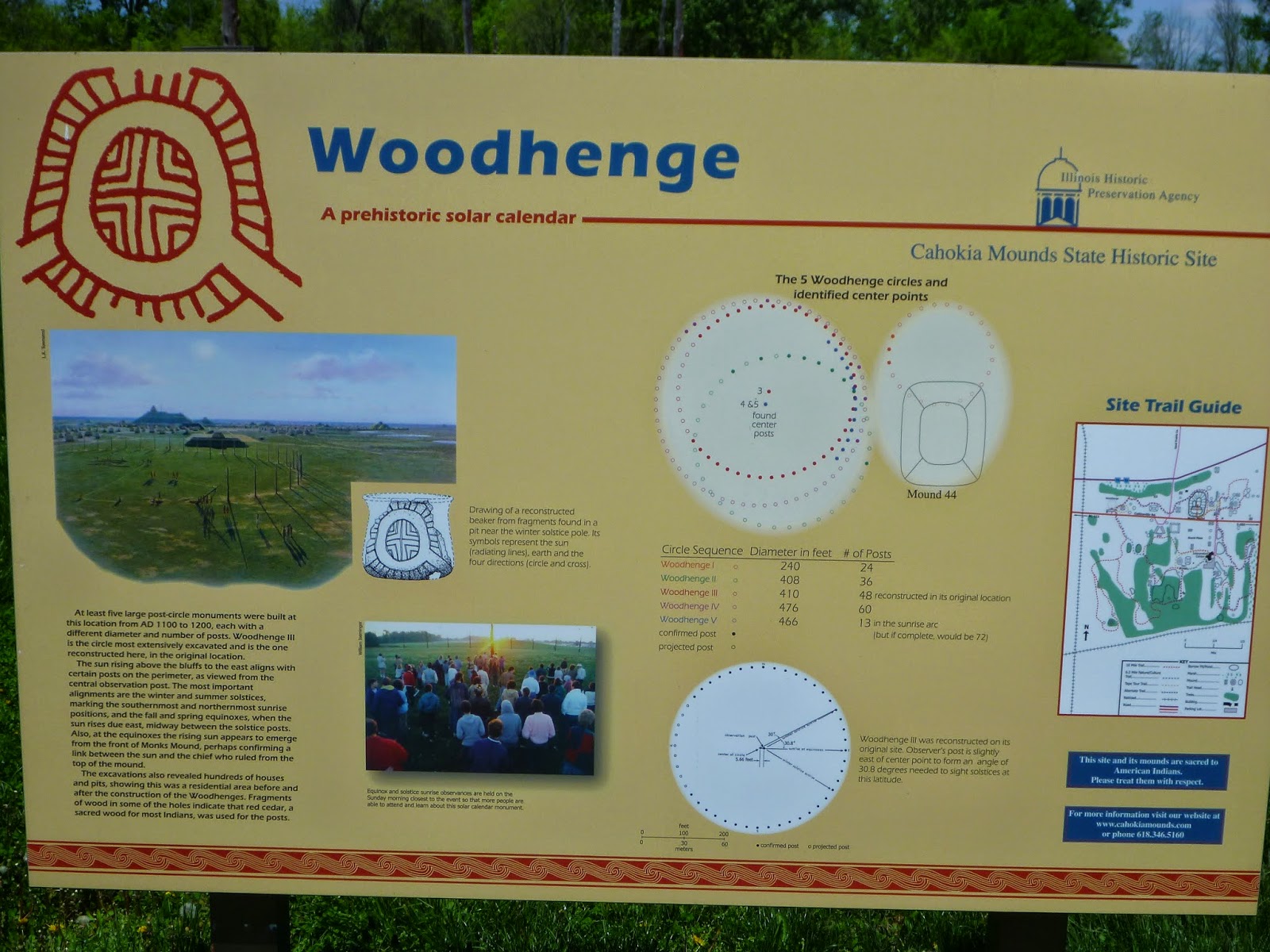I visited
Cahokia Mounds today. It is a very interesting site, and has a great museum or, as they call it, interpretive center. Cahokia was the historically largest urban center in North America north of Mexico until the mid 1700's when Philadelphia surpassed it. At its height more than 20,000 people lived in the six square miles centered around the complex of mounds there.
 |
| View of Downtown St. Louis from the top of Monks Mound |
The largest structure there is
Monks Mound, which rises more that 100 feet above the surrounding countryside and was ultimately a multi-level terraced temple complex. Again, the largest one north of Mexico.
The mounds at Chahokia come in three types:
1) Flat-topped ones that had wooden buildings on the top, structured much like Central American pyramids,
2) Round, conical mounds that are probably burial mounds, and
3) Pointed ridge mounds that may have served as boundary markers.
The city centered around a large open plaza that was bounded on the north by Monk's Mound, where the local ruler likely lived, and by a pair of mounds on the south, one round and the other flat-topped known as the twins.
 |
| Flat-topped "Twin" |
 |
| Conical "Twin" |
 |
| The Great Plaza looking North from below the Conical "Twin" |
There were other smaller mounds on the east and west of the Great Plaza, and the whole area was surrounded by a wooden stockade that may have been covered in clay to help prevent the wood from rotting.
 |
| Reconstructed Stockade just East of Monks Mound |
There was also, at one point in time, a large "woodhenge" astronomical calendar that was used to determine the solstices and equinoxes. This was located outside the stockade to the west of Monks Mound. Both the stockade and Woodhenge were rebuilt several times between 900 and 1300 AD.
 |
| Reconstructed "Woodhenge" |
|
There is not much here to see that really gives the proper impression of a thriving metropolis of 20,000, but if you use your imagination, you can see the plan and where everything fit.
The museum is top-notch and really helps in understanding and appreciating what things must've been like here a thousand years ago.
Like the Ancestral Puebloans and the Fremont, the people of Cahokia abandoned the site in the 1300s. This has to be more than coincidence?
 |
| Mound 72, excavated in the early 1970s |
 |
| Panorama of Monks Mound from the East (Notice the terracing) |
100 feet is high enough to see over the trees, so the top of Monk's Mound offers an excellent view of downtown St. Louis.
Panoramic Views:
 |
| Round "Twin" from the West |
 |
| 180-degree view of the Grand Plaza from the Eastern Side |
 |
| Grand Plaza from the South |
 |
| Monks Mound from the East |
 |
| 180-degreee View from the First Terrace on Monks Mound |
 |
| Almost 180-degree View from the top of Monks Mound, Northeast Corner |
Various explanatory signs from Cahokia Mounds:
































No comments:
Post a Comment